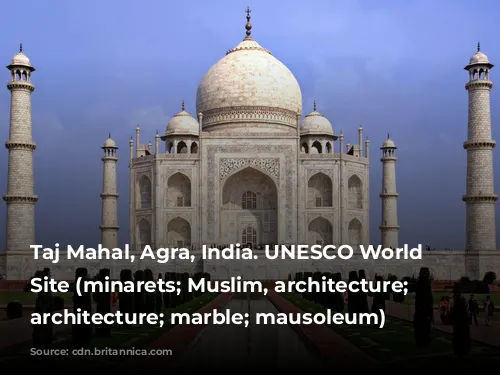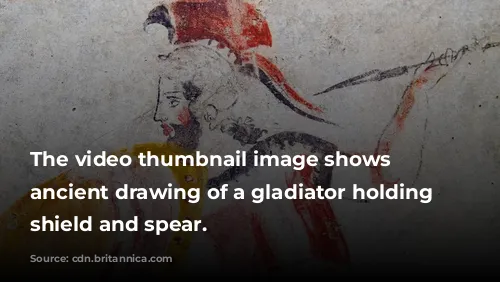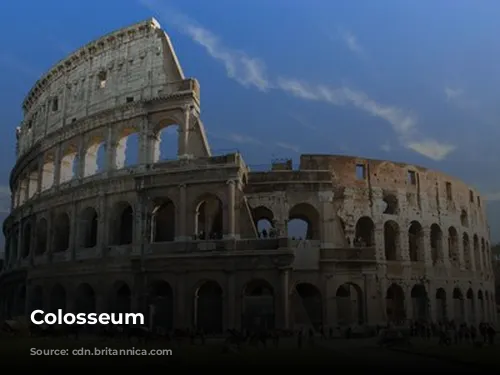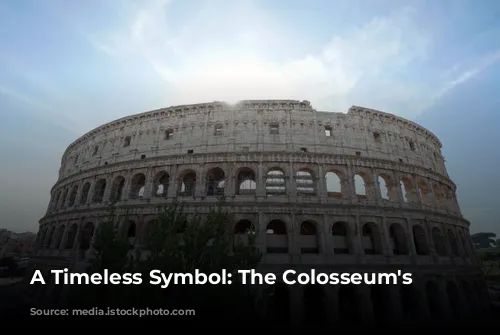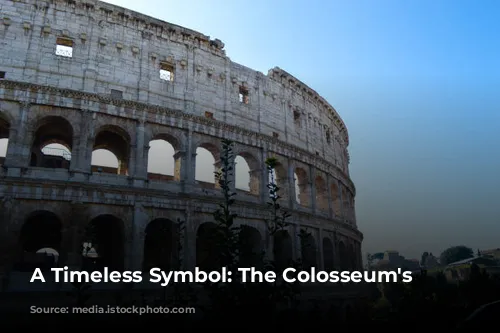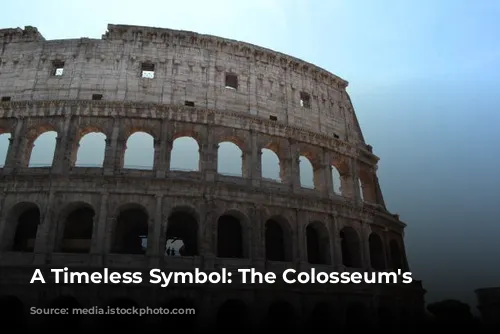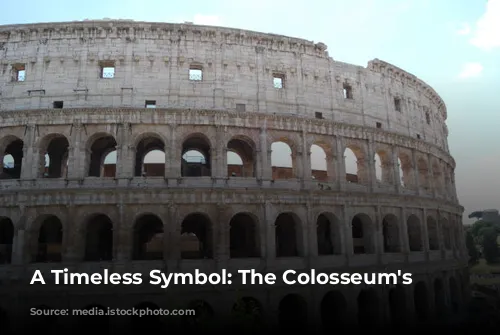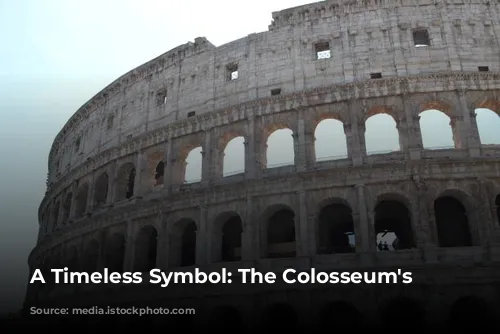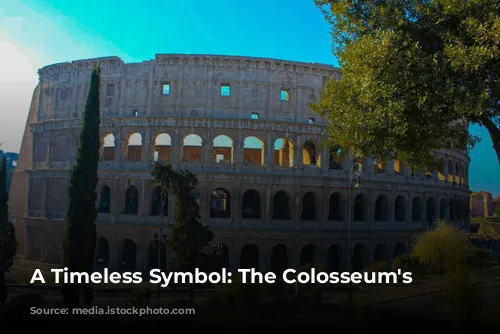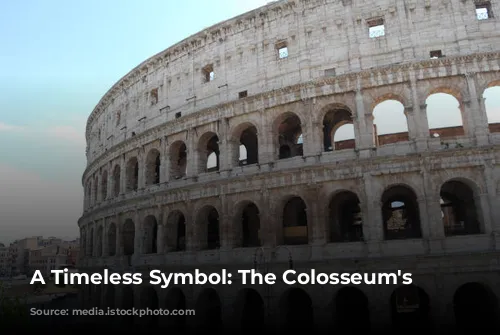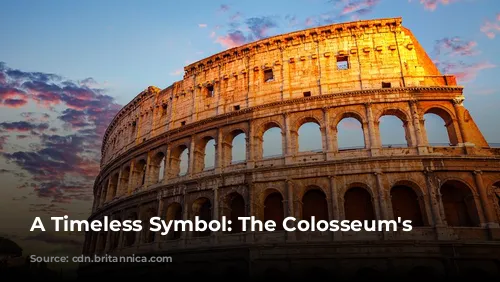The Colosseum, standing tall as one of the few well-preserved structures from the Roman Empire, embodies the ancient Romans’ remarkable architectural and engineering skills. More than just an impressive relic, the Colosseum is a major moneymaker for the Italian government. In 2018, the Colosseum, Roman Forum, and Palatine Hill collectively raked in over $63.3 million (€53.8 million), making it the most lucrative tourist attraction in all of Italy.
From Arena to Fortress: The Colosseum’s Transformation
The Colosseum’s story is one of both grandeur and decay. Following the fall of the Western Roman Empire, the magnificent structure fell into a state of disrepair. In the 12th century, the Frangipane and Annibaldi families turned the arena into their personal fortresses, a far cry from its original purpose. Later, in the late 15th century, Pope Alexander VI even allowed the Colosseum to be used as a quarry! This period of neglect lasted for over a thousand years, until state-funded restoration efforts commenced in the 1990s.
A Monument to Power: The Colosseum’s Construction and Purpose
The Colosseum was erected as part of a grand imperial plan to revitalize Rome after the chaotic “Year of the Four Emperors” in 69 CE. Similar to other amphitheaters, Emperor Vespasian envisioned the Colosseum as a place of entertainment, hosting thrilling gladiator fights, exciting animal hunts, and even impressive mock naval battles.
Construction of the Colosseum began under Emperor Vespasian between 70 and 72 CE. The completed structure was dedicated in 80 CE by Vespasian’s son and successor, Emperor Titus. The Colosseum’s fourth story was added by Emperor Domitian in 82 CE. It’s fascinating to note that the arena’s funding came from the spoils of Titus’s conquest of Jerusalem in 70 CE, and Jewish slaves from Judaea were employed in its construction.
A Colossal Feat: The Colosseum’s Architectural Prowess
The Colosseum is an amphitheater, also known as the Flavian Amphitheater, built in Rome during the reign of the Flavian emperors. This impressive elliptical structure stands tall, reaching four stories at its highest point, and is crafted from a mix of stone, concrete, and tuff. It measures a whopping 620 by 513 feet (189 by 156 meters) and had the capacity to accommodate a staggering 50,000 spectators. The Colosseum’s fame is intrinsically linked to its use for gladiatorial combat.
A Symbol of Imperial Power: The Colosseum’s Location and Design
The Colosseum, a monumental amphitheater, was built in Rome during the reign of the Flavian emperors. Its construction began sometime between 70 and 72 CE, under the rule of Vespasian. Nestled just east of the Palatine Hill, the Colosseum occupies the grounds of what was once Nero’s Golden House. The artificial lake that was the centerpiece of Nero’s lavish palace was drained to make way for the Colosseum. This decision was as much a symbolic gesture as a practical one. Vespasian, who ascended to the throne from relatively humble origins, chose to replace the tyrannical emperor’s private lake with a public amphitheater, a space for tens of thousands of Romans to gather.
The Colosseum’s design is a testament to Roman architectural brilliance. Unlike earlier amphitheaters, which were typically built into the slopes of hills for added support, the Colosseum is a freestanding structure made of stone and concrete. Its intricate construction employs a sophisticated system of barrel vaults and groin vaults. The impressive structure measures 620 by 513 feet (189 by 156 meters) overall. Three of the arena’s stories are adorned with arcades, framed by engaged columns in the Doric, Ionic, and Corinthian orders. The rising arrangement of these columns laid the foundation for the Renaissance concept known as the assemblage of orders. The Colosseum’s primary structural framework and facade are built with travertine, while volcanic tufa comprises the secondary walls. Concrete forms the inner bowl and the arcade vaults.
A Stage for Spectacle: The Colosseum’s Entertainment and Purpose
The Colosseum’s expansive seating capacity, accommodating some 50,000 spectators, was shielded from the sun by a massive retractable awning known as a velarium. Supporting masts extended from corbels built into the Colosseum’s top story, the attic, and hundreds of Roman sailors were required to manipulate the rigging that extended and retracted the velarium. The Colosseum was the epicenter of numerous gladiatorial combats, thrilling contests between humans and animals, and even grand mock naval engagements. However, the historical record remains uncertain regarding whether the arena was the site of the martyrdom of early Christians.
From Glory to Ruin and Revival: The Colosseum’s Legacy
In medieval times, the Colosseum found itself repurposed as a church, before being used as a fortress by two prominent Roman families: the Frangipane and the Annibaldi. Lightning strikes, earthquakes, and the relentless forces of vandalism and pollution took their toll on the Colosseum. The once-glorious marble seats and decorative materials were stripped away, as the site was treated as a quarry for over a millennium. The preservation of the Colosseum began in earnest during the 19th century, with notable efforts led by Pope Pius VIII. In the 1990s, a major restoration project breathed new life into the ancient monument.
Today, the Colosseum remains a major tourist attraction in Rome, welcoming close to seven million visitors each year. Regularly changing exhibitions, showcasing the culture of ancient Rome, captivate and inspire visitors. The Colosseum, a timeless symbol of Roman power and engineering, stands as a testament to the enduring legacy of ancient Rome, captivating visitors with its grandeur and rich history.
